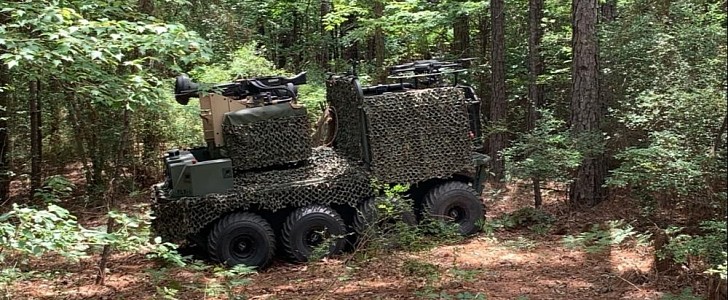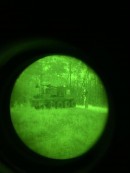Recently, U.S. Army soldiers trained against robotic combat vehicle surrogates in a simulated exercise. This was the first time when the Army integrated such vehicles into the mock enemy troops, also known as the opposing force.
The exercise took place at the Joint Readiness Training Center at Fort Polk, Louisiana, in September. Soldiers from the 1st Battalion, 509th Infantry, which is also known as Geronimo, received two Project Origin vehicles and used them in a simulated battle with the 3rd Brigade Combat Team, 101st Airborne Division.
The Project Origin vehicles are a surrogate system designed for experimentation to support the development of RCVs. The Geronimo force tested them on the field to validate the combat benefits of adding robots to a manned-unmanned teamed formation.
Among the exercise's highlights was the soldiers' deployment of the Project Origin platform to block an intersection for 36 hours, a feat made possible by Origin's minimal heat signature while performing extended hours of battery-powered "silent watch."
In addition, Geronimo used the project Origin vehicles to deny helicopter landing zones and conduct route reconnaissance. Again, the robots helped the soldiers gain a major advantage. While the vehicles were used to conduct these operations, the troops who would have been assigned those tasks could carry out different missions.
The exercise proved to be even more complicated than initially planned, as soldiers had to complete it during a tropical storm.
While everything was going down in Fort Polk, on-site engineers and technicians gathered the necessary technical data. The exercise allowed the U.S. Army to explore the capabilities of the robotic vehicles and provided more insight into how to effectively use them on the battlefield.
"This validated the notion that if we assign the dumb, dirty, dangerous missions to the robots, we can re-assign our Soldiers to the high-priority complex missions and tasks," said Major Cory Wallace, the Robotic Combat Vehicle lead within the Army Next Generation Combat Vehicle Cross-Functional Team (NGCV CFT).
The Project Origin vehicles are a surrogate system designed for experimentation to support the development of RCVs. The Geronimo force tested them on the field to validate the combat benefits of adding robots to a manned-unmanned teamed formation.
Among the exercise's highlights was the soldiers' deployment of the Project Origin platform to block an intersection for 36 hours, a feat made possible by Origin's minimal heat signature while performing extended hours of battery-powered "silent watch."
In addition, Geronimo used the project Origin vehicles to deny helicopter landing zones and conduct route reconnaissance. Again, the robots helped the soldiers gain a major advantage. While the vehicles were used to conduct these operations, the troops who would have been assigned those tasks could carry out different missions.
The exercise proved to be even more complicated than initially planned, as soldiers had to complete it during a tropical storm.
While everything was going down in Fort Polk, on-site engineers and technicians gathered the necessary technical data. The exercise allowed the U.S. Army to explore the capabilities of the robotic vehicles and provided more insight into how to effectively use them on the battlefield.
"This validated the notion that if we assign the dumb, dirty, dangerous missions to the robots, we can re-assign our Soldiers to the high-priority complex missions and tasks," said Major Cory Wallace, the Robotic Combat Vehicle lead within the Army Next Generation Combat Vehicle Cross-Functional Team (NGCV CFT).






